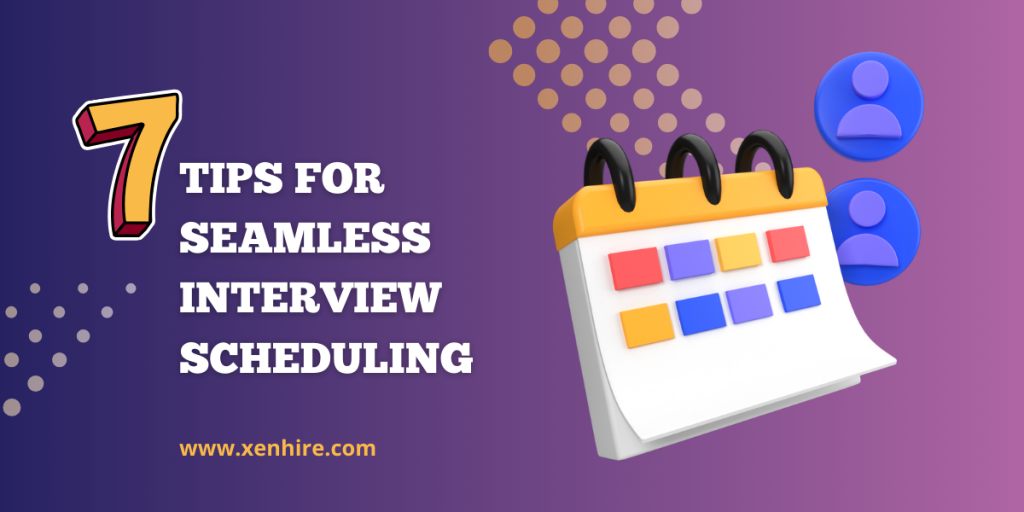With the rise of AI-powered video interview platforms, organizations now have a more convenient and cost-effective way to connect with candidates than ever before. However, coordinating video interviews can still present scheduling challenges, especially when time zones and packed calendars are involved.
To ensure a smooth process for both candidates and hiring managers, it’s essential to avoid common scheduling pitfalls. This blog will guide you through the best practices to streamline video interview coordination, saving time and enhancing the candidate experience.
Why Scheduling Casualties Can Be Costly

Scheduling conflicts during the hiring process can derail your efforts in more ways than one. According to the research, 60% of candidates say they’ve experienced delays or lack of communication during an interview process, and 39% lose interest if scheduling takes too long.
Here’s why avoiding these mishaps is critical:
- Candidate Experience: A missed or delayed interview can leave candidates feeling undervalued, leading them to drop out of the process or form a negative impression of your organization.
- Internal Disruption: Scheduling conflicts can create chaos, affecting the availability of interviewers, disrupting team schedules, and causing bottlenecks in collaboration.
- Inefficiency: Struggling to finalize interview times can slow down your hiring process, affecting your ability to fill positions quickly and efficiently.
Best 7 Tips for Seamless Interview Scheduling

By adopting the following best practices, you can leverage video interview platforms to simplify the scheduling process and avoid unnecessary headaches:
1. Pre-Emptive Availability Gathering
Start by collecting availability from both interviewers and candidates in advance. Most video interview platforms offer calendar integration features that allow interviewers to block out times they are unavailable.
2. Automated Scheduling Tools
Take advantage of automated scheduling tools that are often integrated with video interview platforms. These tools allow you to present candidates with a set of pre-determined interview slots based on interviewer availability, empowering candidates to pick a time that works best for them.
3. Clear and Consistent Communication
Effective communication is key. Ensure that both candidates and interviewers receive written confirmation of interview details, including the date, time, platform access instructions, and interview duration.
4. Time Zone Awareness
If your candidates or interviewers are spread across different time zones, always keep time zone conversions in mind. Use scheduling tools that automatically adjust for time zone differences or offer conversion options to prevent confusion.
5. Buffer Time Between Interviews
Avoid scheduling interviews back-to-back by creating a buffer of at least 10-15 minutes between interviews. This gives interviewers time to regroup and prepare, while also providing flexibility in case an interview runs over.
6. Flexible Scheduling Options
In case of unavoidable scheduling conflicts, be flexible with alternative options. Offering early morning or late evening interview slots can accommodate busy schedules. Additionally, some video interview platforms provide asynchronous interview options where candidates can record their responses at their convenience, reducing the strain on tight schedules.
7. Automated Reminders
Reduce the risk of no-shows by sending automated reminders to both interviewers and candidates. A simple reminder email or notification 24-48 hours before the interview can ensure punctuality and decrease last-minute cancellations.
Additional Strategies for Better Coordination
1. Centralized Coordination
Appoint a dedicated coordinator to manage the interview schedule. Having a single point of contact simplifies communication and ensures that scheduling runs smoothly for both candidates and interviewers.
2. Internal Communication Protocols
Establish clear internal protocols for interview scheduling, such as assigning responsibility for booking interview rooms, sending invites, and handling technical difficulties. This avoids confusion and ensures a structured process.
3. Post-Interview Feedback
After the interview, gather feedback from both candidates and interviewers about the process. This can help identify areas for improvement and enable you to refine your scheduling practices over time.
Also Read: The Ultimate Candidate Screening Software ( Xenhire )
Final Thoughts: Building a Frictionless Interview Experience
By implementing these best practices, you can transform the interview scheduling process into a smooth and efficient experience. Leveraging the full potential of video interview platforms, maintaining clear communication, and proactively addressing scheduling challenges not only saves time but also enhances your employer brand.
Remember: A seamless interview process creates a positive impression on candidates, which can be a decisive factor in attracting and retaining top talent.
Also read: Video Interview Vs In-Person Interview



